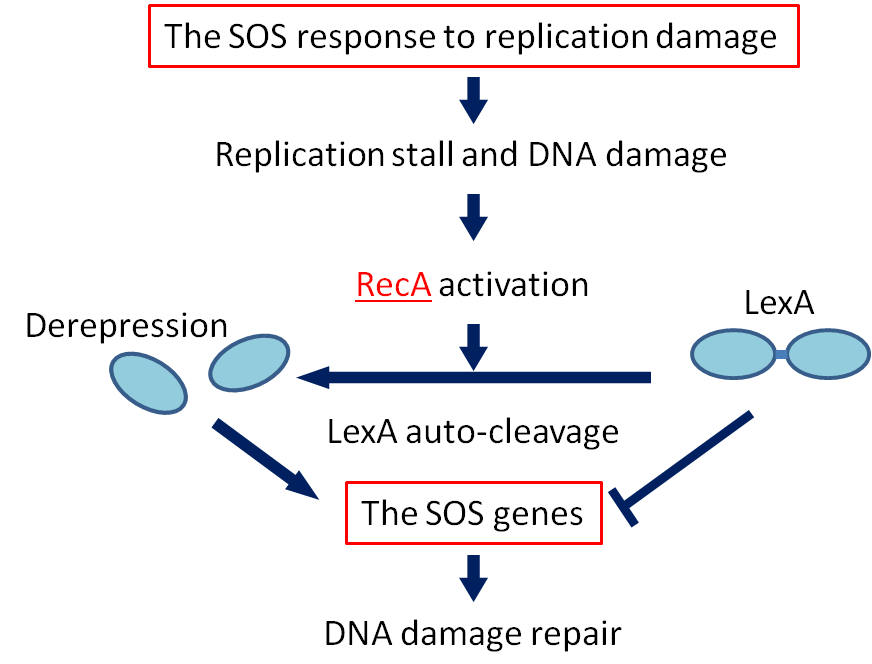Team:Osaka/Project
From 2011.igem.org
(→Project Details) |
(→Detection of DNA damage) |
||
| Line 29: | Line 29: | ||
=== Detection of DNA damage=== | === Detection of DNA damage=== | ||
| - | + | <p>RecA primer (パーツ名) was employed to detect DNA damage. DNA damage induce expression of downstream genes. | |
| - | + | ||
| - | + | ||
| - | + | ||
| - | + | ||
=== Damage tolerance === | === Damage tolerance === | ||
== Results == | == Results == | ||
Revision as of 08:42, 4 October 2011
Contents |
Overall project
In the modern world, radioactivity is a phenomena well understood by science, and harnessed by engineering for nuclear power generation, radiology in medicine, radioisotopic labeling in biological studies and numerous other applications. However, it is an undeniable fact that the ionizing radiation resulting from radioactive decay may cause critical effects on biological creatures, from the smallest bacteria to plants and animals including humans.
On March 11, 2011, the Great East Japan Earthquake struck off the coast of Eastern Japan and triggered a series of equipment failures, nuclear meltdowns, and releases of radioactive materials at the Fukushima 1 Nuclear Power Plant, leading to a nationwide nuclear crisis. While ‘Grays’, ‘Sieverts’, ‘exposure’, ‘equivalent dosage’ and other related terms and units became referred daily in the media, much of the general populace remained ignorant of their meanings and significance. The need for low-cost, portable and easy-to-use dosimeters was apparent as measurements of radiation exposure could only be conducted at dedicated installations spaced far apart and the numbers reported only infrequently.
Hence, this year, iGEM Osaka has decided to tackle the subject of building a biological dosimeter. Focus will be placed on modularly transferring radiation-response and DNA repair genes from the extremophilic bacterium Deinococcus radiodurans to the well-characterized, easily cultivable chassis of Escherichia coli. Once radioresistance has been conferred, the native DNA damage detection and repair systems of E. coli will be tweaked to enable efficient sensing of ionizing radiation through detection of the resultant DNA damage. Finally, the system will be connected to well-defined, visible outputs such as color pigment production through further introduction of heterologous genes, resulting in a biological device capable of detecting ionizing radiation and alerting users to it through color change.
Project Details
System construct
If DNA is damaged greatly by some factors such as UV radiation or chemicals, synthesizes of some damage-related proteins occur quickly. This reaction to DNA damage is SOS response.
RecA is a 38 kilodalton Escherichia coli protein essential for the repair and maintenance of DNA. RecA has multiple activities, all related to DNA repair. In the bacterial SOS response, it has a co-protease function in the autocatalytic cleavage of the LexA repressor and the λ repressor. LexA is expressed constitutively and prevents damage-related proteins to be expressed by binding to SOS box as a repressor. RecA is activated by binding to single-strand DNA caused by damage, and then, conducts activation of LexA protease. Decreasing LexA enable damage-related protein to be expressed.
According to this reaction of bacteria, we employ RecA as a key protein of our system.
Detection of DNA damage
RecA primer (パーツ名) was employed to detect DNA damage. DNA damage induce expression of downstream genes.
 "
"


